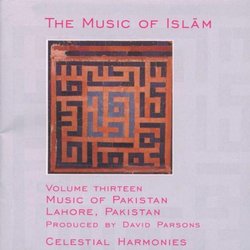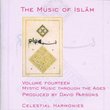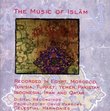| All Artists: Ustad Bary Fateh Ali Kahn Title: Music of Islam 13: Music of Pakistan Members Wishing: 0 Total Copies: 0 Label: Celestial Harmonies Release Date: 4/14/1998 Genres: International Music, Pop Styles: Middle East, Islamic, India & Pakistan, Pakistan Number of Discs: 1 SwapaCD Credits: 1 UPC: 013711315325 |
Search - Ustad Bary Fateh Ali Kahn :: Music of Islam 13: Music of Pakistan
 | Ustad Bary Fateh Ali Kahn Music of Islam 13: Music of Pakistan Genres: International Music, Pop
Ten years in the making, The Music of Islam series recorded in Egypt, Morocco, Tunisia, Turkey, Yemen, Pakistan, Indonesia, Iran and Qatar represents the most comprehensive sound documentation available to Westerners to... more » |
Larger Image |
CD Details
Synopsis
Album Description
Ten years in the making, The Music of Islam series recorded in Egypt, Morocco, Tunisia, Turkey, Yemen, Pakistan, Indonesia, Iran and Qatar represents the most comprehensive sound documentation available to Westerners today, of a world religion dating back to 1/622. Although governed by strict rules for fourteen centuries, contact with other cultures has radically affected Islamic music throughout history. As the world enters the XV/21st century the timing of this collection serves an even larger purpose, documenting the traditions that have survived and will continue to survive for centuries to come. Today, one fifth of the world's population, one billion people, are Muslims, occupying a large territory stretching from the Atlantic shore of north and west Africa, through west, central, and south Asia to island southeast Asia, and attracting an increasing following in India, western Europe, north America, east Asia, and southern Africa. This is a global presence which cannot be ignored.The classical music of Pakistan has its roots in pre-Islamic times. Hence the names of the majority of ragas have Hindu connections and are from the Sanskirt language. Muslim musicians from Pakistan will generally sing in the Urdu language and the lyrics, if religious, will be in praise of Allah.Islamic culture, and in particular Persia, has had a profound influence on the evolution of music. Today, Muslim musicians play a major role in the music world. Whether they are from Pakistan or India, names like Ustad Bary Fateh Ali Khan, Vilayat Khan, Amjad Ali Khan, or the late Nusrat Fateh Ali Khan are among the great musicians of the XIV/20th century.In this recording, Ustad Bary Fateh Ali Khan presents three ragas for three different periods of the day: early morning, early evening and evening. The concept of set periods of the day to which ragas are attached is based upon how one generally feels at different times. This is further defined by scale and the ascending or descending structure of the raga. Each raga is in the tin-tal rhythmic cycle, the closest to the Western concept of 4/4 time.

 Track Listings (3) - Disc #1
Track Listings (3) - Disc #1


